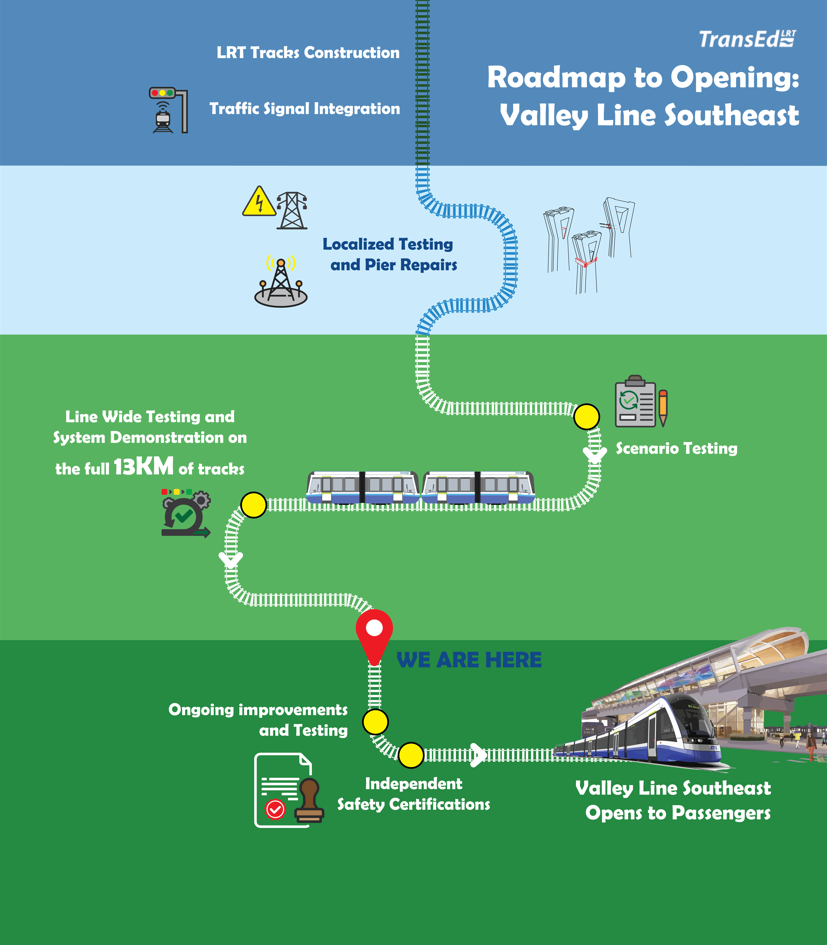TransEd provides an update on the performance demonstration testing and service commencement of Valley Line Southeast LRT
TransEd, the company responsible for the design, build, operations and maintenance of the Edmonton Valley Line Southeast LRT, is pleased to provide an update on the project.
As previously announced, TransEd has been conducting performance demonstration line-wide testing of the 13-kilometre LRT to demonstrate the full functionality of Valley Line Southeast.
System demonstration testing began in early March 2023. We are happy to announce this testing period has met our performance expectations. "This is a huge milestone and brings us one step closer to delivering and operating a new transportation option that will serve the needs of a growing and changing Edmonton population," says Ronald Joncas, TransEd's Chief Executive Officer. "As I have said previously, we have designed and built this LRT to be a long-lasting system as per City requirements, and we are committed to delivering a safe, reliable and high-quality system that Edmontonians expect and deserve."
The objective of the testing period is to validate the LRT systems, infrastructure and signalling to optimize the passenger experience before the system opens. Various service levels and combinations of trains are being tested across the entire system to validate the efficiency, accuracy and reliability in peak and off-peak periods to reflect future service schedules. Testing has been done in a variety of seasonal and climatic conditions, further proving the full functionality and performance of components under different scenarios, including snow, rain, salt, high winds, and extreme cold and heat.
TransEd continues to look for opportunities to improve the LRT's performance and strengthen its reliability for the benefit of passengers' experience. Recent testing identified cables that need to be replaced to improve long-term system reliability. Replacing the cables now rather than during the operational phase will allow TransEd to operate Valley Line Southeast with more reliability once the line opens, while also reducing future operational impacts. The cables are easily accessible to crews, and train testing will continue concurrently. This work will be done at TransEd's expense.
"To ensure future reliability, we have decided to replace and upgrade the cables now to ensure the system will perform to our high standards while we operate it over the next 30 years, and for many years beyond," Mr. Joncas continues.
Concurrent with this upgrade, TransEd will finalize and submit the required documentation for review by the independent certifier needed for Service Commencement. We are working closely with the City and more information about a potential opening date for Valley Line Southeast will be provided as cable upgrades and independent certification nears completion later this summer.
As the Valley Line Southeast is a low-floor, urban-style mode of transit, it will not use warning bells and crossing gates, and trains will behave differently at intersections than the current LRT. This means Edmontonians should be vigilant and carefully follow all traffic rules and signage around the new line. More information on public safety around the Valley Line can be found at transedlrt.ca and edmonton.ca/projects_plans/transit/pedestrian-and-traffic.
Courtesy of TransEd
